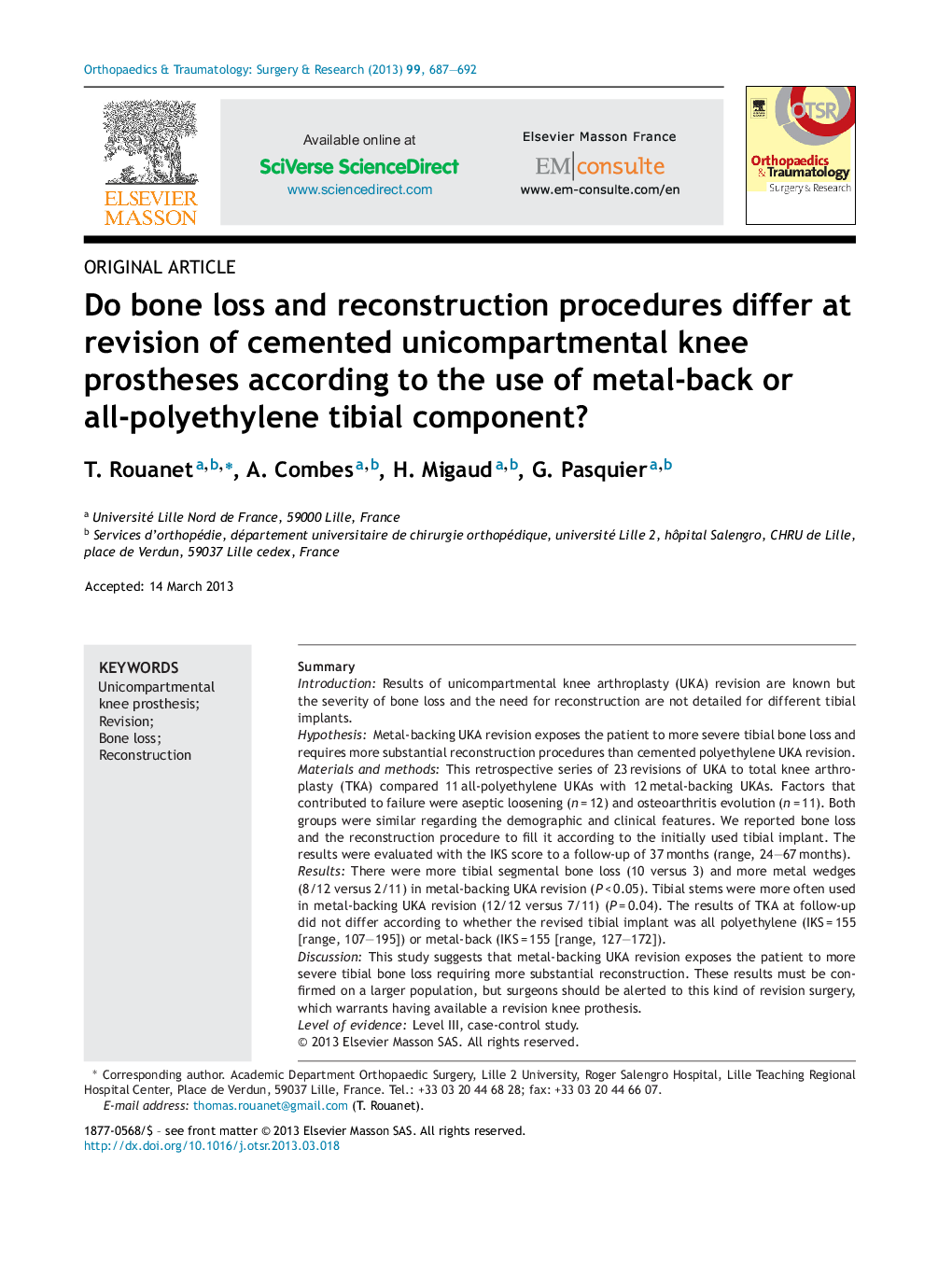| Article ID | Journal | Published Year | Pages | File Type |
|---|---|---|---|---|
| 4081729 | Orthopaedics & Traumatology: Surgery & Research | 2013 | 6 Pages |
SummaryIntroductionResults of unicompartmental knee arthroplasty (UKA) revision are known but the severity of bone loss and the need for reconstruction are not detailed for different tibial implants.HypothesisMetal-backing UKA revision exposes the patient to more severe tibial bone loss and requires more substantial reconstruction procedures than cemented polyethylene UKA revision.Materials and methodsThis retrospective series of 23 revisions of UKA to total knee arthroplasty (TKA) compared 11 all-polyethylene UKAs with 12 metal-backing UKAs. Factors that contributed to failure were aseptic loosening (n = 12) and osteoarthritis evolution (n = 11). Both groups were similar regarding the demographic and clinical features. We reported bone loss and the reconstruction procedure to fill it according to the initially used tibial implant. The results were evaluated with the IKS score to a follow-up of 37 months (range, 24–67 months).ResultsThere were more tibial segmental bone loss (10 versus 3) and more metal wedges (8/12 versus 2/11) in metal-backing UKA revision (P < 0.05). Tibial stems were more often used in metal-backing UKA revision (12/12 versus 7/11) (P = 0.04). The results of TKA at follow-up did not differ according to whether the revised tibial implant was all polyethylene (IKS = 155 [range, 107–195]) or metal-back (IKS = 155 [range, 127–172]).DiscussionThis study suggests that metal-backing UKA revision exposes the patient to more severe tibial bone loss requiring more substantial reconstruction. These results must be confirmed on a larger population, but surgeons should be alerted to this kind of revision surgery, which warrants having available a revision knee prothesis.Level of evidenceLevel III, case-control study.
